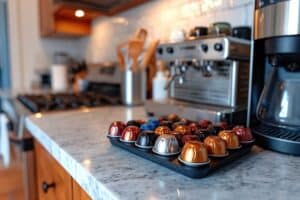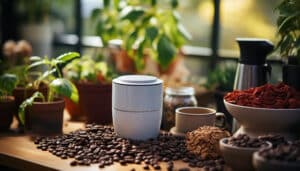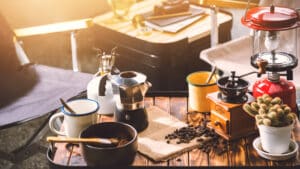How To Make Good Drip Coffee?
Key Takeaways
- Choosing the right coffee beans is crucial for making good drip coffee
- Grinding the coffee beans properly is important for optimal extraction and flavor
- Paying attention to the brewing process and using a high-quality coffee maker will also contribute to a delicious cup of drip coffee
When it comes to brewing coffee at home, one of the most popular methods is drip brewing. Drip coffee makers offer convenience and the ability to make a large quantity of coffee at once. But how do you ensure that your drip coffee turns out delicious every time? In this article, we’ll explore the key steps and factors to consider when making good drip coffee.
Choosing the Right Coffee Beans
One of the most important aspects of making good drip coffee is selecting the right coffee beans. The flavor, aroma, and overall quality of your coffee will greatly depend on the beans you choose. Here are some factors to consider:
- Type of Bean: There are two main types of coffee beans – Arabica and Robusta. Arabica beans are known for their superior flavor and lower caffeine content, while Robusta beans have a stronger taste and higher caffeine concentration. Choose based on your preference.
- Freshness and Roasting: Look for freshly roasted beans, ideally no more than two weeks post-roast. The roast level also plays a role in flavor. Lighter roasts have a brighter acidity, while darker roasts offer a bolder taste.
- Acidity and Flavor Profile: Consider the acidity level and flavor profile of the coffee beans. Some beans have fruity or floral notes, while others are more nutty or chocolatey. Experiment with different origins and processing methods to find your preferred taste profile.
Grinding the Coffee Beans
Once you have selected the right beans, the next step is to grind them properly. Here are some tips for grinding coffee beans for drip brewing:
- Grind Size: For drip coffee, a medium-fine grind is generally recommended. This ensures optimal extraction without over-extraction or clogging the filter.
- Burr Grinder: Invest in a burr grinder, if possible, as it provides a more consistent grind size compared to blade grinders. Consistency is key for even extraction and balanced flavor.
- Freshness: Grind the beans just before brewing to retain freshness and maximize flavor. Pre-ground coffee loses its aroma and flavor more quickly.
Brewing Process
Now that you have your freshly ground coffee, it’s time to brew it using a drip coffee maker. Here are the steps to follow:
- Water Quality: Start with filtered or bottled water to avoid any impurities that can affect the taste of your coffee.
- Water Temperature: The ideal water temperature for drip brewing is between 195-205 degrees Fahrenheit (90-96 degrees Celsius). This range ensures proper extraction of flavors from the coffee grounds.
- Coffee-to-Water Ratio: Use a ratio of around 2 tablespoons of ground coffee for every 6 ounces of water. Adjust the ratio according to your preference for a stronger or milder brew.
- Brewing Time: Allow the coffee to brew for about 5 minutes. This allows sufficient time for the water to extract the flavors from the coffee grounds.
Choosing a High-Quality Coffee Maker
The quality of your drip coffee will also depend on the coffee maker you choose. Look for features that ensure optimal brewing parameters and convenience. Here are some considerations:
- Temperature Control: A coffee maker with temperature control allows you to set the water temperature within the recommended range for drip brewing.
- Adjustable Brew Strength: Some coffee makers offer the option to adjust the brew strength to suit your preference.
- Pre-Infusion: Pre-infusion is a feature that wets the coffee grounds before brewing, allowing for better extraction and flavor.
Experimentation and Personalization
Finally, don’t be afraid to experiment and personalize your drip coffee brewing experience. Try different beans, origins, and processing methods to discover unique flavors that suit your taste. Adjust the grind size, coffee-to-water ratio, and brewing time to achieve the desired strength and flavor.
Conclusion
Making good drip coffee requires attention to detail, from choosing the right beans to brewing with precision. By following the steps outlined in this article and considering factors such as bean type, freshness, grind size, and brewing parameters, you can enjoy a delicious cup of drip coffee every time. Remember to invest in a high-quality coffee maker that offers the features you need for a satisfying brewing experience.
Related Websites:
- The Best Drip Coffee Maker – Epicurious
- The Bonavita Enthusiast 8-Cup Drip Coffee Brewer – The New York Times
- The Breville Precision Brewer Thermal Drip Coffee Maker – Good Housekeeping
- How to Grind Coffee Beans for Drip – Majesty Coffee
- Best Coffee Beans for Drip – Coffee Brewster
- How to Make Drip Coffee – Coffee Affection
- How to Make Strong Drip Coffee – Majesty Coffee
FAQs:
Q: What is drip coffee and how does it work?
Drip coffee is a brewing method where hot water is poured over coffee grounds and slowly drips through a filter. The water extracts the coffee flavor as it passes through the grounds and collects in the pot or carafe.
Q: Why choose drip coffee as a brewing method?
Drip coffee is popular due to its simplicity, convenience, and ability to brew large quantities. It consistently produces a smooth and balanced flavor, making it a favorite choice for many coffee enthusiasts.
Q: What is the optimal water temperature for brewing drip coffee?
The ideal water temperature for brewing drip coffee is between 195 to 205 degrees Fahrenheit (90 to 96 degrees Celsius). This range helps extract the best flavors from the coffee grounds.
Q: How do I clean and maintain my drip coffee maker?
To maintain your drip coffee maker, regularly clean it by rinsing the carafe, removing and cleaning the filter, and wiping down the machine. For descaling, use a mixture of vinegar and water or a commercially available descaling solution. Follow the manufacturer’s instructions for storage recommendations to ensure long-lasting performance.
Q: How can I enhance the flavor and aroma of my drip coffee?
To enhance the flavor and aroma of your drip coffee, consider using freshly roasted, high-quality coffee beans. Experiment with different varieties to discover your preferred flavors. Additionally, grind your coffee beans just before brewing to maintain freshness, and adjust the coffee-to-water ratio according to your taste preferences.






